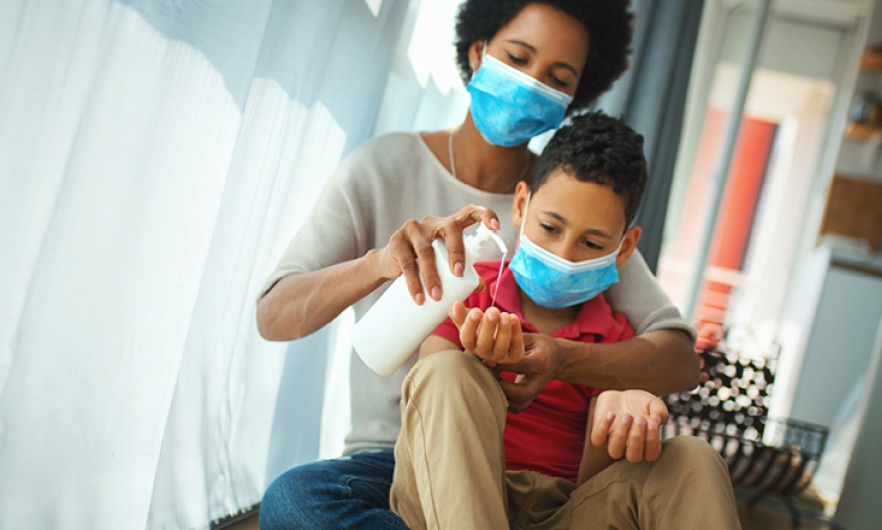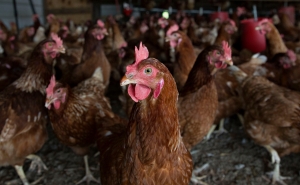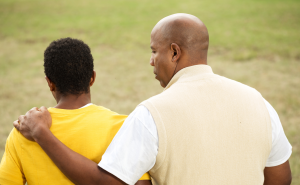Re-opening? How families can reassess

With the proportion of the population that is fully vaccinated increasing and community transmission decreasing, our communities are entering a new phase of “re-opening” that includes removal of many masking and social distancing mandates. But the virus is still with us and the pandemic is not over, particularly for families with young children and household members who are immune compromised.
People and families are wondering how we continue our role in protecting our loved ones while resuming some activities. The COVID-19 vaccines have changed our calculations of the risks associated with our choices. Children under 12 years old do not yet have access to vaccination, and many families are also trying to figure out how to protect household members who may not have a full response to the vaccines due to compromised immune systems.
A “north star” is helpful to guiding decision making. One that we have found helpful is: “protecting yourself, your family, and your community.” The epidemiology shows:
- The vaccines work against variants of the virus.
- For those who are unvaccinated, reducing ones’ contact with others reduces the probability of becoming infected with COVID-19, particularly when community transmission is high.
- Once a family member is sick, the probability of transmission to an unvaccinated person in the household is high.
- If unvaccinated or when large groups of people gather and vaccination status is unknown, wearing masks or doing outdoor activities can protect others in our communities by keeping our germs to ourselves and benefiting from others doing the same for us.
It is also important to consider your family’s specific circumstances. If your family includes children younger than 12 years old, you may wish to follow the guidelines for unvaccinated individuals when choosing family activities. For example, vaccinated parents may have dinner at a restaurant for date night, but the Sunday afternoon family activity is an outdoor hike or a family playdate with one other household. Vaccination is the best way to protect yourself and those in your family who may not (yet) be vaccinated.
With your north star in place alongside an understanding of your family’s risk from others and to others, consider a few key questions about potential interactions:
Whom will you be interacting with?
Interacting with people who are vaccinated is less risky than interacting with unvaccinated people. A family playdate with one other family and with all eligible people vaccinated can greatly reduce the risk to unvaccinated young children and family members who may be immune compromised. If you are interacting with a household of unvaccinated individuals or you are unsure of their vaccination status, be sure guidelines for unvaccinated individuals are in-place, including masking and social distancing, and consider interacting outdoors where the risk of transmission is lower.
If you are thinking of bringing a childcare provider into your home this summer, inquire about their vaccination status. If they are unvaccinated, inquire about their social distancing practices, such as what other jobs they may have and how many other people they regularly interact with.
If summer camps are open in your area, choosing outdoor camps, camps with vaccinated staff, a smaller number of kids or podding practices, where the kids attending do not change much from week-to-week, and camps that do not require your child to ride a bus (or other shared vehicle) can reduce risk.
What is the current proportion vaccinated and the current spread of COVID-19 in my community?
Being aware of COVID-19 in your community is important to making informed decisions, particularly when protecting unvaccinated household members. State and local health departments are posting data on their websites. Pay particular attention to the proportion of people in your community that are vaccinated as we all strive towards the goal of 70% vaccinated. Also pay attention to the community transmission rate per 100,000 population and the proportion of COVID-19 tests that are positive. Community transmission is considered “low” when there are less than 10 COVID-19 cases per 100,000 population and less than 5% of COVID-19 tests are positive. Keep an eye out for increases in the number of new infections per 100,000 population or the proportion of tests that are positive as signs of increased risk to your family. See the JHU Coronavirus Map to view these measures in your county.
Where will the interaction take place?
Less risky spaces include outdoor space where unvaccinated family members can stay six feet away from others. If the interaction must take place in a home, unvaccinated individuals should wear masks and maintain social distancing from other unvaccinated individuals.
If you have a vacation booked for an area you feel is low risk for you and your family, you should also consider the risk to the community you will be visiting if you are unvaccinated.
Is the interaction necessary and what are the policies in place?
As broad mask mandates and restrictions on capacity begin to lift, it is time to re-think the interactions that are necessary for unvaccinated individuals. For example, you may choose to take your unvaccinated young children to an outdoor sporting event with masks and space for social distancing, but you may not feel comfortable taking them to a grocery store that does not require masks. If you have immune compromised individuals in your household, you may choose a small backyard gathering of your adult friends rather than taking your household to a restaurant to meet friends.
Finally, if someone has COVID-19 symptoms, get tested (even if the ill person was previously vaccinated). If someone is sick with COVID-19 in your household, your decision-making must immediately change. The CDC has clear guidance for how to care for someone in your home in isolation. Isolating the ill person and implementing quarantine for all others in the family is essential to protecting your community. “Breakthrough cases,” or confirmed COVID-19 in a person who is fully vaccinated, is rare, but can occur and may be more likely to occur in immunocompromised people who do not have an adequate immune response to vaccination. All signals at this point are that these breakthrough cases are generally mild rather than severe disease.
As we have all learned during this pandemic, the path forward for families is not clear or straightforward. Vaccination is essential for putting this pandemic behind us. As we wait for all individuals to be eligible for vaccination and as we consider how to maintain protection of our immunocompromised household members, having a “north star” and reassessing your family’s risk is our new normal.




